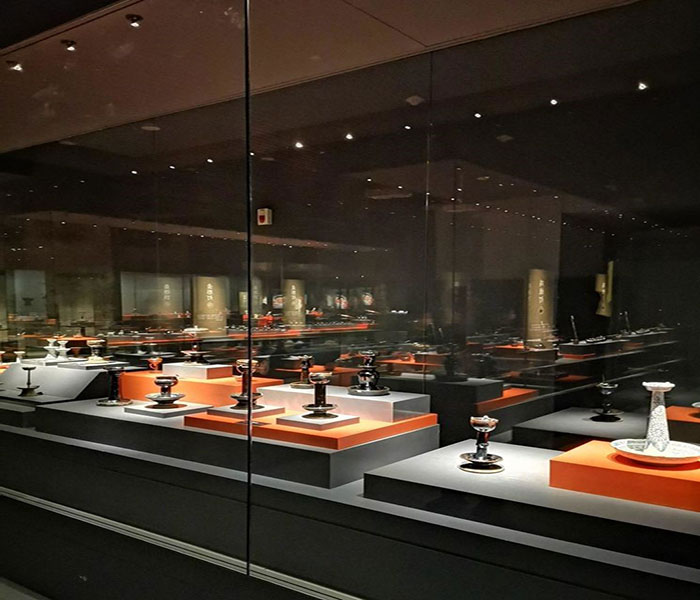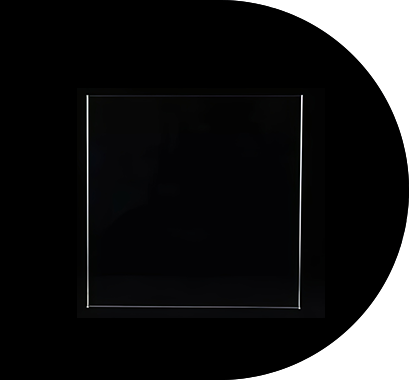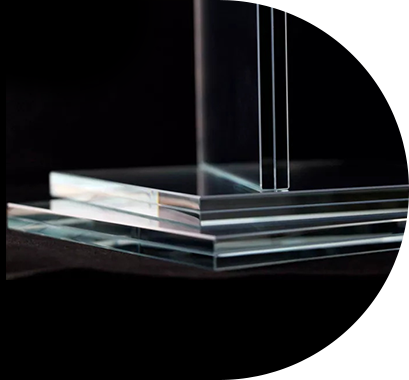The choice of framing glass plays a crucial role in the protection and display of artwork. Low-reflective framing glass, in particular, has become the material of choice for art collectors and galleries due to its ability to reduce light reflections and enhance the viewing experience, while protecting the artwork from harmful rays such as UV rays. In this article, we'll take an in-depth look at how to select the ideal low-reflective framing glass to ensure the desirable protection for your precious artwork.
Understanding the Properties of Low-Reflection Framing Glass
Low-reflective picture frame glass, also known as anti-reflective glass or AR glass, reduces reflectivity by coating the surface of the glass with one or more layers of film. This special treatment significantly reduces light reflection from the glass surface, allowing the viewer to see the artwork more clearly without the interference of reflections. In addition, high-quality, low-reflective glass filters out some of the ultraviolet light, protecting the artwork from fading and degradation that can result from long-term exposure to the harmful spectrum.
Consider Size and Thickness
The thing to consider when choosing low-reflection picture frame glass is the size and thickness. The size of the glass should be slightly larger than the size of the artwork to provide adequate coverage for the artwork. In terms of thickness, thicker glass (e.g. between 4mm and 6mm) is usually recommended as this not only provides better protection but also increases the stability and security of the frame. However, if the artwork is very valuable and easily damaged, thinner glass may need to be customized to reduce the stress on the piece.
III. Check the quality of the anti-reflective coating
The quality of the anti-reflective coating has a direct impact on the effectiveness of the low-reflective glass. When selecting one, the coating should be carefully checked for uniformity, absence of air bubbles, color differences, and other defects. High-quality coatings usually have higher light transmittance and lower reflectivity, which can be measured by professional optical instruments. If possible, it's a good idea to observe the product in person or ask for a sample to make sure it meets your requirements for visual effects.

IV. Ask about UV protection
In addition to anti-reflective properties, the ideal low-reflective picture frame glass should also have a certain degree of UV protection. Long-term exposure to UV rays can cause irreversible damage to artwork, such as color fading and material deterioration. Therefore, choosing glass with UV absorbers or special coatings can effectively extend the life of the artwork. When shopping, you should ask the supplier about the UV blocking rate of the glass and choose products with a high blocking rate as far as possible.
V. Choose professional manufacturers and suppliers
To ensure the quality and service reliability of low-reflection picture frame glass, it is crucial to choose professional manufacturers and suppliers. Professional manufacturers usually have advanced production equipment and strict quality control systems, which can ensure the consistency and stability of the products. At the same time, professional suppliers can provide a full range of services, including cutting, processing, and installation, to ensure that the glass can be perfectly adapted to your artwork and exhibition environment.
Consider cleaning and maintenance
Although low-reflective picture frame glass reduces the frequency of maintenance, it still requires proper cleaning and maintenance to keep it in the desirable condition. When making your selection, it is important to understand the cleaning methods and maintenance requirements of different coatings. Some coatings may have special requirements for cleaning agents or wiping tools, and improper cleaning may damage the coating. Therefore, ask your supplier about maintenance desirable practices and follow these guidelines to extend the life of your glass.
VII. Budget and Cost Effectiveness
While low-reflective picture frame glass offers significant advantages in protecting artwork, it also typically costs more than regular glass. Budget and long-term cost-effectiveness should be considered when making a choice. Compare prices and product performance from different suppliers to find the cost-effective option. Sometimes, investing in a higher-priced, high-quality product can save you more money in the long run on maintenance costs and potential artwork restoration.
To summarise, selecting the ideal low-reflection picture frame glass is a process that takes into account some factors. From the basic characteristics of the glass to the quality of the coating to the choice of supplier and service, each step needs to be carefully evaluated. With these points of advice, you will be able to choose an desirable protection solution for your precious artwork, ensuring that it will retain its pristine beauty for years to come.






